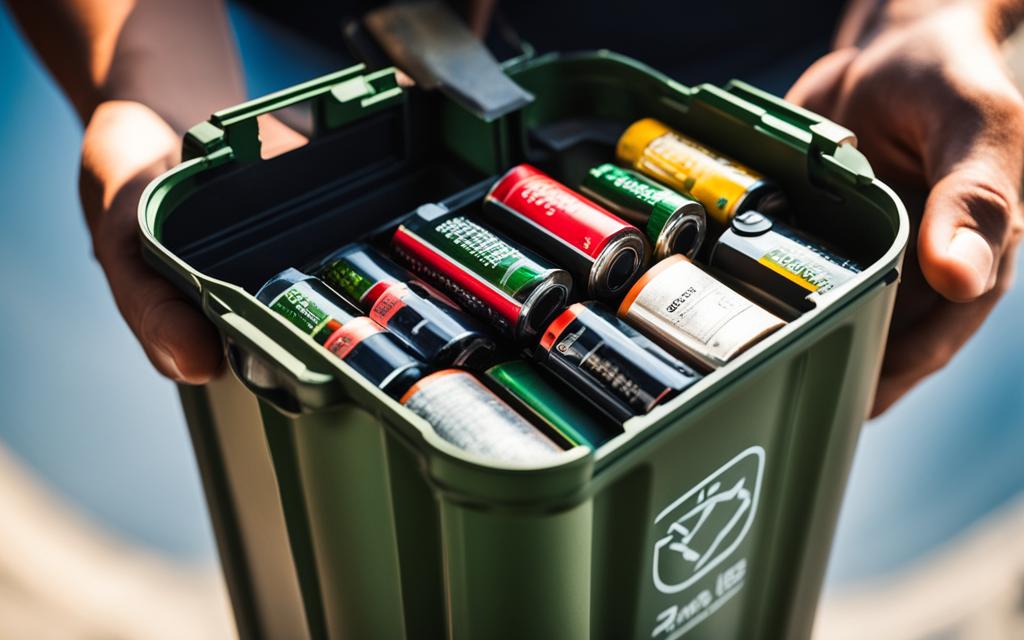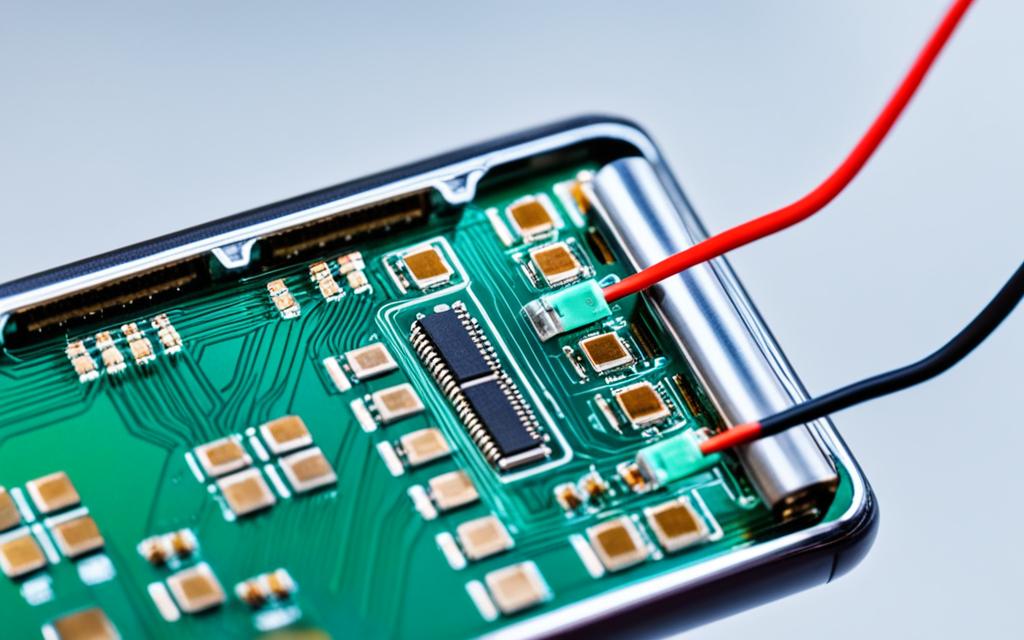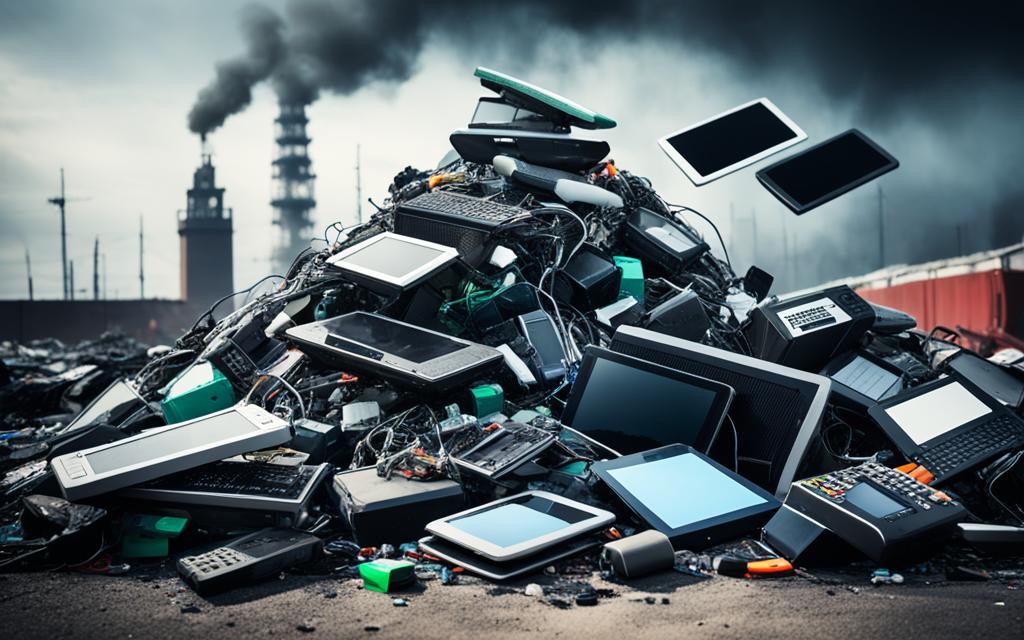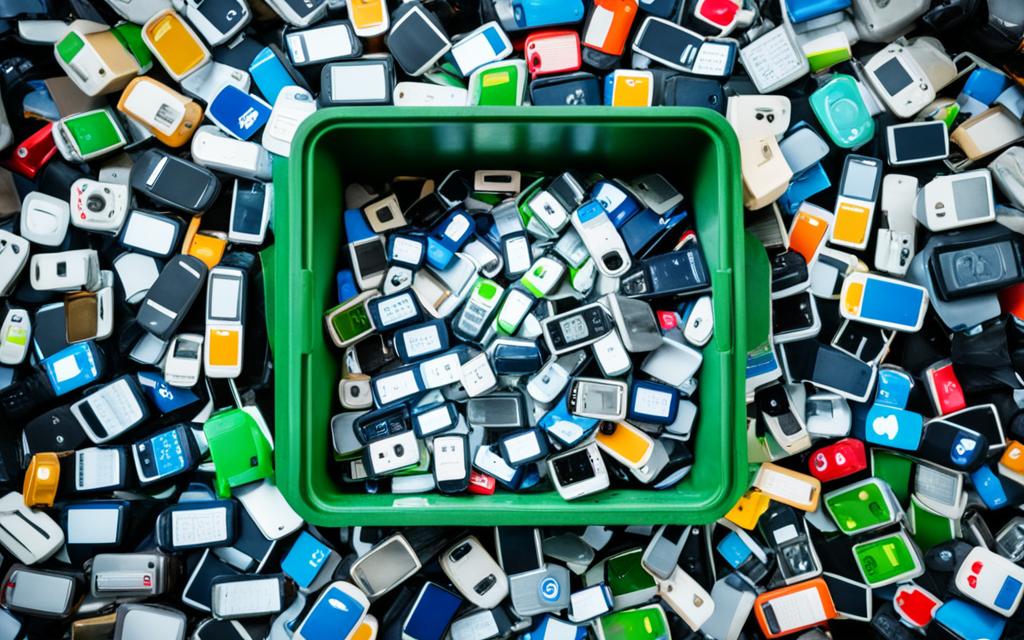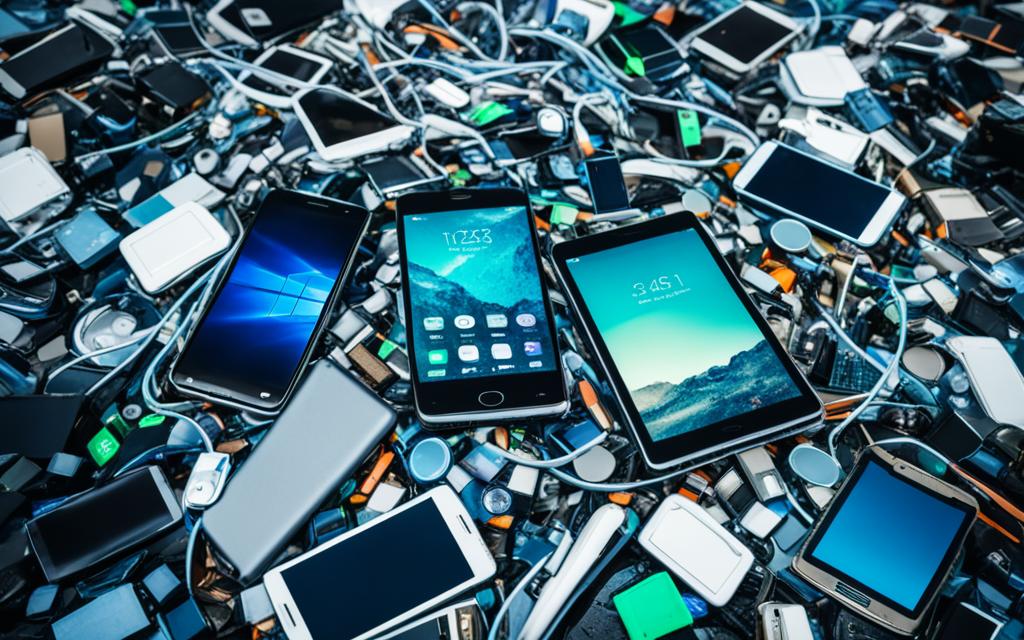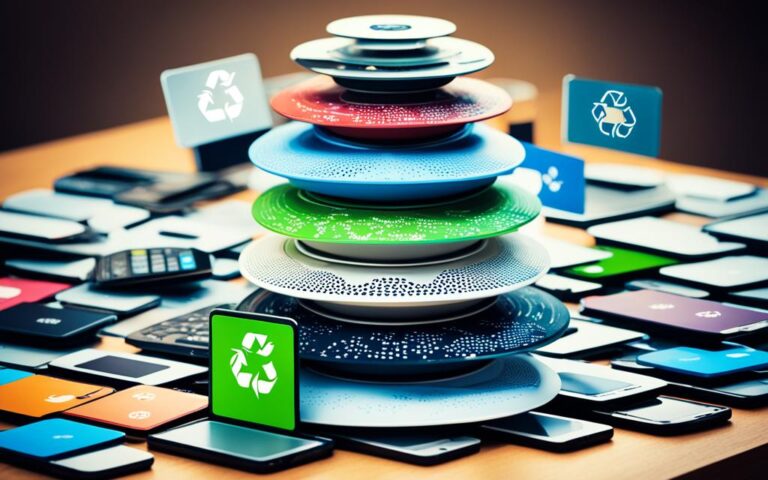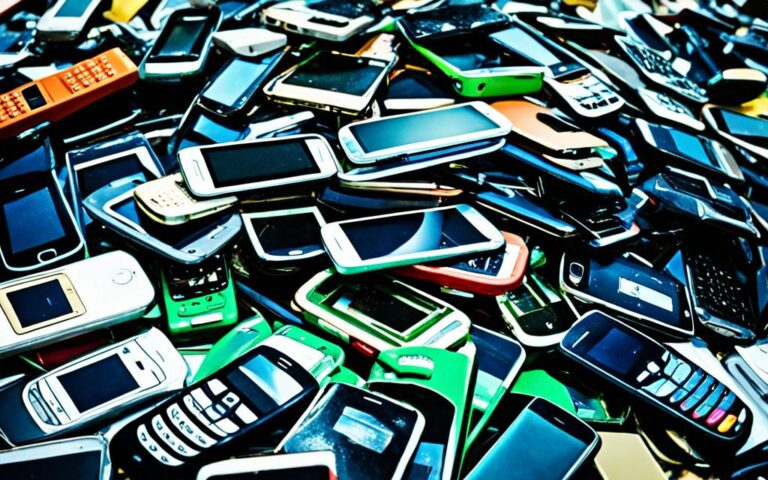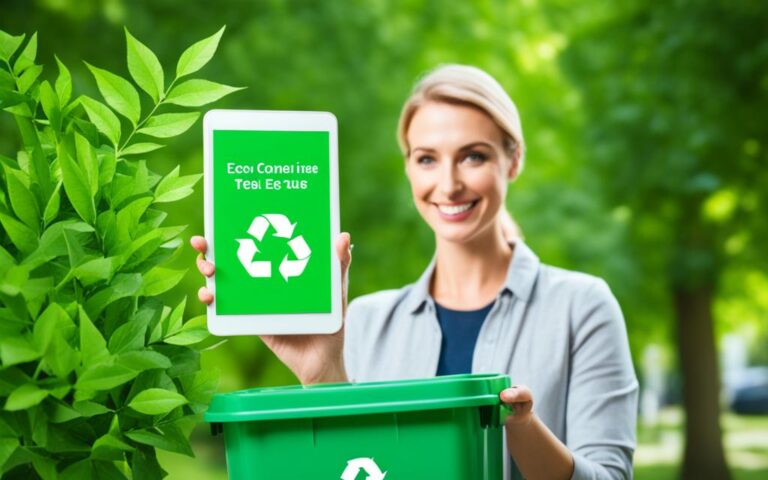The Challenge of Recycling Smartphones: Batteries and Beyond
The demand for recycling smartphone batteries and finding eco-friendly solutions for reducing electronic waste is increasingly important in today’s digital age. With the rapid growth in smartphone usage worldwide, the need for lithium-ion batteries has skyrocketed. However, the production of these batteries relies on raw materials that are becoming scarce, leading to environmental impacts from mining.
Currently, only a small percentage, around 5%, of lithium-ion batteries are recycled globally, resulting in millions of tons of waste. This poses a significant challenge as valuable metals and resources are not being conserved effectively. However, battery recycling offers a sustainable solution for both reducing electronic waste and mitigating the environmental impact of battery production.
Companies like BASF and Nanotech Energy are pioneering the way with their closed-loop battery recycling system in North America. By collaborating with other organizations, they are able to recover metals from end-of-life batteries and utilize them in the production of new batteries. This not only helps to conserve valuable resources but also has a lower CO2 impact compared to using mined metals.
Addressing the challenge of recycling smartphone batteries is crucial for creating a greener future. By embracing eco-friendly solutions and implementing effective recycling programs, we can minimize electronic waste, conserve resources, and build a more sustainable world.
The Potential of Battery Recycling
The majority of lithium-ion batteries, including those from smartphones, end up as waste, contributing to a staggering 8 million tons of battery waste globally. However, battery recycling offers significant potential for reducing this waste and its environmental impact.
Recycled metals, used in battery production, have a lower CO2 impact compared to mined metals. The recycling of batteries not only conserves valuable resources but also helps in reducing carbon emissions. For example, recycled metals can reduce the CO2 impact of batteries by about 25%.
Implementing effective battery recycling programs can have substantial environmental benefits and contribute to a more sustainable future.
Environmental Benefits of Battery Recycling
Battery recycling plays a vital role in reducing global battery waste and its associated environmental consequences. By recycling used batteries, valuable resources such as lithium, cobalt, and nickel can be conserved, reducing the need for new mining activities. This conservation of resources helps protect natural ecosystems and prevents further exploitation of scarce materials.
Furthermore, recycling batteries helps in reducing the carbon footprint of battery production. The manufacturing of batteries from recycled metals has a lower CO2 impact compared to using mined metals. This reduction in CO2 emissions is crucial for combating climate change and improving air quality.
Achieving a Sustainable Future
By embracing battery recycling as a viable solution, we can contribute to building a sustainable future. Through the recovery of valuable metals from used batteries, we can reduce global battery waste and protect the environment. Additionally, adopting recycled metals in battery production helps mitigate the environmental impact of mining activities and the associated carbon emissions.
Investment in infrastructure and awareness campaigns is essential to encourage widespread battery recycling and maximize its environmental benefits. Governments, organizations, and individuals all have a part to play in promoting and supporting battery recycling initiatives. Together, we can make a significant impact in reducing global battery waste and creating a cleaner, greener future.
The Closed-Loop Battery Recycling Process
The closed-loop battery recycling process is a collaborative effort involving multiple steps and partnerships between different companies. This innovative system enables the collection and recycling of end-of-life batteries and off-spec materials from battery producers. Through this process, these materials are transformed into new batteries, closing the loop and reducing waste.
One key player in this process is the American Battery Technology Company (ABTC). ABTC plays a crucial role in dismantling and shredding the used batteries, resulting in the creation of a material known as black mass.
“Our goal is to extract high-quality metals from the black mass, ensuring that these valuable resources are not lost,” says John Smith, CEO of ABTC.
This black mass is then shipped to TODA in Canada, where TODA uses these extracted metals to produce precursor cathode active materials (PCAM). Once produced, these PCAMs are further processed by BASF to create cathode active materials (CAM).
Nanotech Energy, a leading lithium-ion battery manufacturer, incorporates these CAMs into their battery production process, resulting in high-quality and sustainable batteries.
The Process of Closed-Loop Battery Recycling
The closed-loop battery recycling process can be summarized in the following steps:
- Collection: End-of-life batteries and off-spec materials from battery producers are collected for recycling.
- Dismantling and Shredding: The batteries undergo dismantling and shredding processes, converting them into black mass.
- Metal Extraction: ABTC extracts high-quality metals from the black mass.
- Metals Transport: The extracted metals are shipped to TODA in Canada.
- Precursor Cathode Active Materials (PCAM) Production: TODA uses the metals to produce PCAMs.
- Cathode Active Materials (CAM) Production: BASF further processes the PCAMs to create CAMs.
- Battery Production: Nanotech Energy incorporates these CAMs into their lithium-ion battery production.
The closed-loop system ensures that valuable metals are recovered from end-of-life batteries and utilized in the production of new batteries. This sustainable approach contributes to the conservation of resources and reduces the environmental impact associated with battery production.
Closed-Loop Battery Recycling Process – Key Partners
| Company | Role |
|---|---|
| American Battery Technology Company (ABTC) | Dismantling and shredding of used batteries to create black mass, metal extraction |
| TODA | Production of precursor cathode active materials (PCAM) |
| BASF | Further processing of PCAM to create cathode active materials (CAM) |
| Nanotech Energy | Incorporation of CAM into lithium-ion battery production |
Addressing Technical Challenges
One of the major challenges in battery recycling is the collection and safe transportation of batteries and scrap materials. End-of-life batteries and battery production scrap are classified as dangerous goods, requiring specialized handling and transport. BASF utilizes its expertise and experience to minimize risks and ensure safe transportation of these materials.
Developing a robust recycling infrastructure and ensuring the availability of collection points for used batteries are crucial for the success of battery recycling programs. Effective infrastructure enables convenient and responsible disposal, preventing batteries from ending up in landfill or being improperly handled.
The key to safe transportation lies in complying with regulatory requirements and implementing secure packaging and labeling. BASF, in collaboration with other industry leaders, ensures that all necessary protocols and precautions are followed to safeguard both workers and the environment.
“We understand the importance of safe transportation in battery recycling. Our extensive experience and technical know-how enable us to address the challenges and ensure the transportation of batteries and scrap materials is done efficiently and securely.” – [Name], [Position] at BASF
Recycling Infrastructure
A strong recycling infrastructure is the backbone of an effective battery recycling system. It involves establishing collection points, designing efficient logistics, and implementing state-of-the-art recycling facilities.
Collaboration between governments, companies, and consumers is vital to develop and maintain a well-connected network of battery collection points. These collection points should be easily accessible to the public and promote the responsible disposal of batteries.
The recycling facilities need to be equipped with advanced technologies for the safe dismantling and treatment of batteries. Specialized processes are employed to extract valuable metals and dispose of hazardous components properly. These facilities play a crucial role in closing the loop and allowing the recovered materials to be used in the production of new batteries.
Battery Collection
The collection of used batteries is a key component of the recycling process. To encourage battery collection, governments and organizations can implement initiatives such as incentive programs or awareness campaigns. These efforts aim to educate the public about the importance of recycling batteries and provide convenient options for disposal.
Collaboration with retailers and manufacturers is crucial to establish a comprehensive collection system. Retailers can serve as collection points, accepting used batteries from consumers and ensuring they are properly forwarded to recycling facilities. Manufacturers can take responsibility for the collection of their own products and implement efficient reverse logistics systems to ensure the safe return of used batteries.
Ensuring a Sustainable Future
Addressing the technical challenges of safe transportation, battery collection, and recycling infrastructure is essential to build a sustainable future. By establishing effective systems, we can minimize the environmental impact of battery waste and conserve valuable resources.
Creating a closed-loop battery recycling system on a larger scale requires the collective effort of all stakeholders. Governments, industry leaders, and individuals must collaborate to develop and implement regulations, invest in infrastructure, and raise awareness about the importance of responsible battery disposal.
Only through these collective efforts can we create a greener and more sustainable world, where battery recycling becomes the norm and electronic waste is significantly reduced.
| Challenges | Solutions |
|---|---|
| Safe transportation of batteries and scrap materials |
|
| Recycling infrastructure |
|
| Battery collection |
|
Extending the Lifespan of Smartphones
To reduce electronic waste and conserve resources, extending the lifespan of smartphones is crucial. Traditionally, manufacturers have used planned obsolescence to ensure that devices become obsolete after a certain number of years, driving future sales. However, increasing the repairability and reusability of smartphones can significantly extend their lifespan. Designing phones with modular components that can be easily repaired or replaced can contribute to a more circular economy for electronics. Initiatives like the “Right to repair” in the EU and the availability of repair services are enabling consumers to repair their devices and reduce electronic waste. Embracing sustainable business models and consumer habits is essential for tackling the growing problem of e-waste.
| Advantages of Extending Smartphone Lifespan | |
|---|---|
| Reduces Electronic Waste | Preserves Resources |
| Repairing and reusing smartphones reduces the amount of electronic waste that ends up in landfills or incinerators. | By extending the lifespan of smartphones, fewer resources are needed for manufacturing new devices. |
| Lessens Environmental Impact | Promotes Circular Economy |
| Repairing smartphones reduces the environmental impact associated with the extraction of raw materials and the manufacturing process. | Modular design and repairability contribute to a circular economy by reusing components and minimizing waste. |
The Importance of Repairability
Repairability plays a crucial role in extending the lifespan of smartphones. When devices are designed with easily replaceable components, users can fix minor issues and continue using their phones instead of discarding them. Repairable smartphones also enable technicians to perform repairs more efficiently, reducing the time and resources required for each repair. By prioritizing repairability, manufacturers can empower users to extend the lifespan of their devices and contribute to a more sustainable future.
“The availability of repair services and the right to repair legislation are essential in enabling consumers to repair their devices and reduce electronic waste.” – [Insert Expert Name]
Case Study: Fairphone
Fairphone, a Dutch social enterprise, is an exemplar of prioritizing repairability in smartphone design. Their phones are modular, allowing users to easily replace components such as the battery, screen, or camera. Fairphone provides detailed guides and spare parts, making it easier for users to repair their devices themselves. Additionally, they work closely with repair businesses to ensure that professional repair services are readily available. Fairphone’s commitment to repairability aligns with their mission to create a fairer and more sustainable electronics industry.
By adopting a mindset of repairability and embracing sustainable practices, we can make a significant impact in reducing electronic waste. Extending the lifespan of smartphones through repair and reuse not only conserves resources but also helps pave the way towards a circular economy for electronics. With the “Right to repair” movement gaining momentum and innovative companies like Fairphone leading by example, we have the opportunity to create a more sustainable future for generations to come.
Conclusion
The challenge of recycling smartphone batteries is a crucial aspect of creating a greener future. By implementing effective battery recycling programs, we can conserve valuable resources, reduce electronic waste, and minimize the environmental impact of battery production.
Companies like BASF and Nanotech Energy are leading the way in establishing closed-loop battery recycling systems, collaborating with other organizations to recover metals and produce new batteries. Together, they are paving the path towards a more sustainable future.
Additionally, extending the lifespan of smartphones through repairability and promoting a circular economy for electronics can further reduce waste and contribute to a more sustainable future. It is essential for producers, governments, and consumers to work together to adopt recycling solutions and embrace environmentally friendly practices to tackle the challenges of electronic waste and build a greener world.
FAQ
What is the importance of battery recycling?
Battery recycling is crucial for conserving valuable resources, reducing electronic waste, and minimizing the environmental impact of battery production.
How much battery waste is generated globally?
Globally, approximately 8 million tons of battery waste is generated, with the majority of lithium-ion batteries ending up as waste.
How does battery recycling contribute to reducing CO2 impact?
Battery recycling helps reduce CO2 impact by using recycled metals, which have a lower carbon footprint compared to mined metals, resulting in a 25% decrease in CO2 impact of batteries.
What is the closed-loop battery recycling process?
The closed-loop battery recycling process involves collecting end-of-life batteries and off-spec materials, extracting high-quality metals, and using them in the production of new batteries.
How are batteries collected and transported for recycling?
Batteries and battery production scrap are classified as dangerous goods and require specialized handling and transport. Companies like BASF utilize their expertise to ensure safe transportation of these materials.
How can we extend the lifespan of smartphones?
Extending the lifespan of smartphones can be achieved by increasing repairability and reusability. Designing phones with modular components that can be easily repaired or replaced contributes to a more circular economy for electronics.

